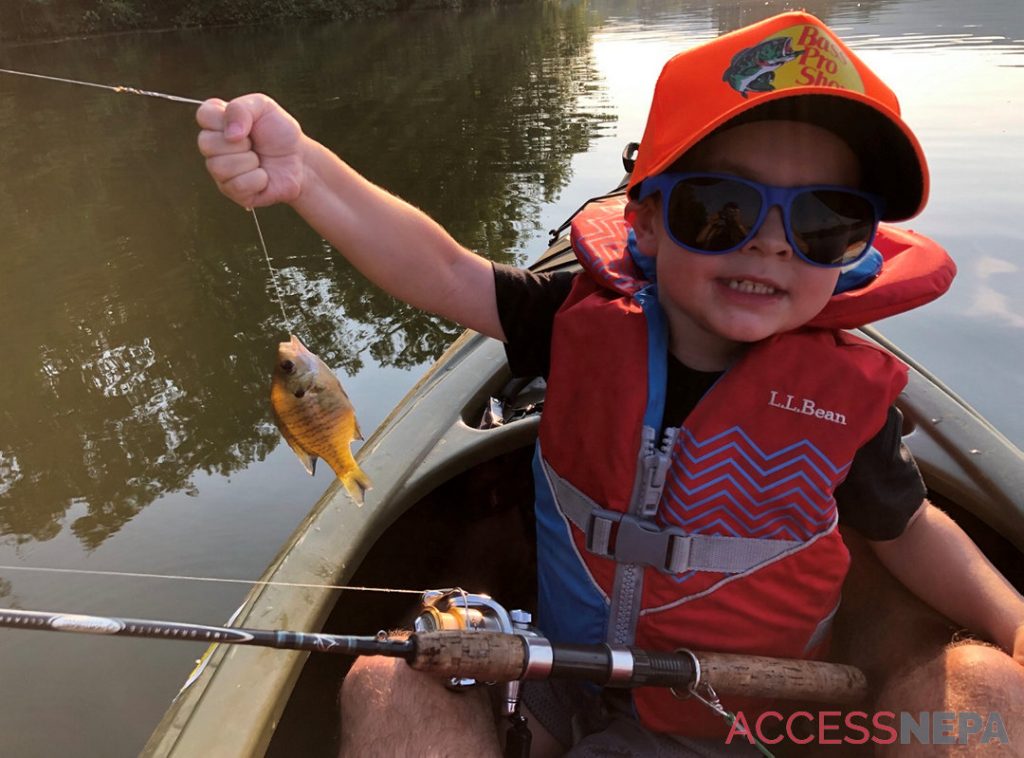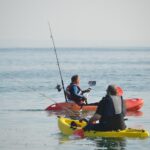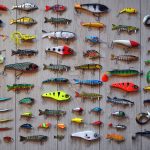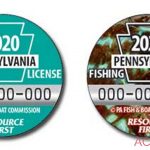BY TYLER FRANTZ
Late spring sunshine felt warm against my skin while maneuvering the hull kayak to the middle of the glistening farm pond. My fishing vest loosened to fit over a personal floatation device as I nonchalantly laid the paddle across my lap and sifted through my pockets to find just the right tackle for the job.
Eyeing the shoreline cattails, out came a small, weighted swimbait to mimic baitfish fleeing from cover. Taking my time, I affixed the lure, gave a half paddle sweep to turn broadside and flipped the bail for a 25-foot cast toward the green vegetation towering above the water.
Immediately on the fall, there were several flashes of fish vying for the bait as it fluttered downward, but it was a hefty bluegill that got there before I could even begin reeling. It was the first of many panfish and bass caught and released from the inside edge of cover over the next hour or so.
Prospecting small ponds by kayak can be a real treat, especially for kayak angling novices or those testing out new equipment. It offers a low stress environment for getting acquainted with the multitasking techniques that kayak angling requires before venturing out to bigger water such as lakes and rivers, where conditions further complicate the process.
The calm and tranquil water of a small pond is ideal for practicing basic paddling techniques — such as alternating downward strokes for straight tracking, reverse strokes for slowing down and long horizontal sweeps for turning — in a controlled situation. It’s a great place to get kids involved too, and I enjoy taking my son along with me on flat water once the weather warms, who by age 4 was able to paddle us around with a little guidance and instruction, and it was reassuring to know dry land was only a short distance away if his interest or behavior began to diminish.
Pond shorelines, which are typically flat and shallow, also provide relatively stable areas for practicing entering and exiting a kayak, which tends to be one of the most likely scenarios to overturn. Keeping well-balanced weight distribution and a low profile is imperative to safely boarding and disembarking your vessel, even in shallow water.
Beyond offering a perfect place to learn the proper mechanics of kayaking, many ponds are often unpressured, receiving only occasional fishing attention. When they are targeted, it is likely that anglers generally cast from shore and only to places they can reach based on the vegetation or distance that may limit their efforts.
Fishing from a kayak allows presenting bait toward cover from a perpendicular angle that the fish literally may not have seen before. This unlocks access to some of the most productive fishing imaginable, simply because it is fresh and realistic.
A highly effective technique is to parallel up to structure on the non-dominant side, lay the paddle across your lap and cast across your body with your dominant arm to present bait and work the lure back. This engages the fish’s predatory instincts to chase from cover into deeper water, many times triggering a “feeding frenzy” of sorts that almost guarantees subsequent catches.
Be sure to keep gear well organized and within reach, such as in a vest or a secured lure box immediately in to the front. Consider using a snap swivel to quickly and easily change out lures while the fishing is hot, even if one type, size or color begins to fall out of favor with the resident slabs.
Work all types of cover — natural vegetation, submerged rocks or intake pipes and even docks if the ponds have them — as each of these provide likely holding locations for fish, but try not to get too close that it puts off the bite. Once all targeted cover is exhausted, try dropping some weighted live bait into the deepest portion of the pond to let things settle for a bit.
Then go all in by “trolling” a deep diving crankbait through the middle of the pond while paddling back to shore. More times than not, this approach prompts a last-minute strike, often from an above average fish.
Though the local farm pond might not be the most exotic destination for kayak angling, I’d wager that if it harbors fish, you’ll most certainly catch plenty by giving small pond kayak fishing a try. It’s a great way to learn the ropes of kayaking while reeling in scores of unpressured fish in the process.
Frantz is a past president of the Pennsylvania Outdoor Writers Association. Contact the writer: outdoors@republicanherald.com




